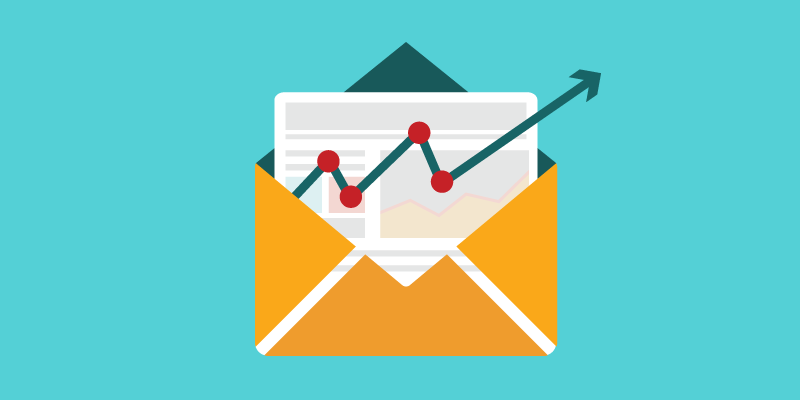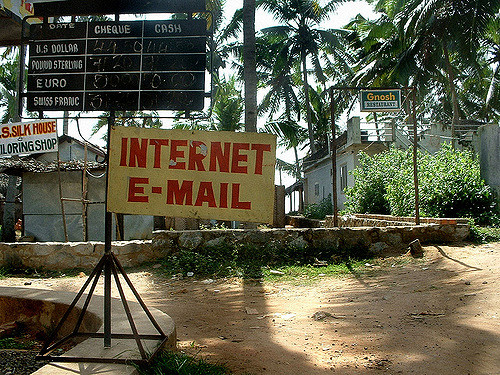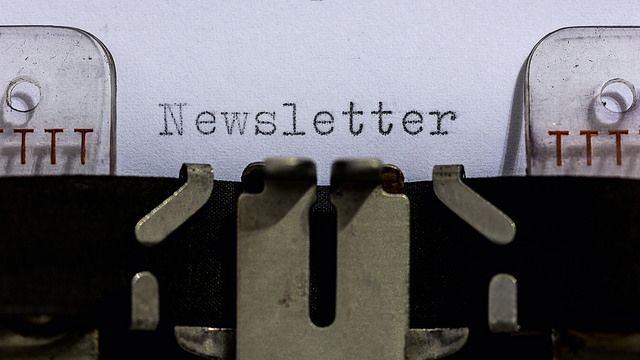

Image by Matt Wilson (Flickr)
Conventional wisdom has been writing off email marketing for the last few years, but there’s a reason it sticks around. It works. More than any other form of digital marketing, an email is more likely to be noticed and read simply because it’s something its recipients have asked you to send them. It makes sense that they’d be likely to want to see what’s inside.
More than other digital marketing tactics, email gives you the room to stretch out a little bit, and write something worth reading. Nothing too long, but just enough to give your subscribers a personal glimpse into your business. You’ve got your subscribers’ attention, and you’re personalising your brand—two important tools for building loyalty. But this is only half the battle: you don’t want loyal readers, you want loyal customers. Marketing emails are your primary connection to these potential customers, so they need to have more than just an interesting personality. To convert your readers and shoppers, there are some details you can’t overlook.
Write an Effective Subject Line
There’s no one single type of subject line that will work for you every time. In fact, if you use the same strategy (or, worse, the same line) in every email, people will get bored fast. Sometimes you can ask a question—
Ever wondered why your mailing list subscribers never buy anything?
—or make like you’re letting them in on a secret—
Everyone’s talking about these email subscriber conversion tips!
—or localise the subject based on user locations—
See why businesses in London use these email conversation strategies.
Write something nice. Make it personal through segmenting.
Even if the point of the email is promotional—that is, you’re looking to get people to click on and buy certain things—you’ve still got to take the time to say a few words. This is your chance to get personal. That doesn’t mean you have to tell your readers about the nasty cold you had last week, but it does mean you’ll want to tailor the content as much as possible to your audience. Using data you ought to be able to see from your POS or eCommerce platform, you’ll be able to identify preferences of your customers—even subscribers who’ve just browsed your website. If a certain segment of your audience is looking mostly at t-shirts, while another segment only has eyes for corduroy pants, you should be creating separate lists with appropriate offers. When people know that the offers they receive targeted to their interests, they’ll keep opening those emails. And soon, they’ll start buying. Back in 2012, Totes-Isotoner did this with their email marketing and increased their email-driven revenue by more than 7,000%. So when you write to the t-shirt segment, talk about t-shirts. When you write to the corduroy people, sing praises to the pants. In all cases, keep it brief. Appeal to what is appealing to them and the whole thing feels less generic, more personalised.
Make sure your emails are mostly text.

Image by Dennis Skley (Flickr)
Many people design their email marketing around pictures. They add the text into the pictures, and then lay all the images out the way they like them. It’s all well and good to make your email look prettier than just a string of text, but images need to support the message—not contain them. Many email services and clients will block images by default, waiting for the user to authorise their download. In those cases, you’ll have sent these users empty emails of broken links. At that point, they’re more likely to delete the thing than investigate further. By making the body of your email actual text, you give your reader the chance to at least know what they’re missing by not seeing the images. They can choose to download them, add you as a trusted sender, and, most importantly, see your highly effective call-to-action. Which brings us to the next step.
Create an effective Call-To-Action
That point where you get a reader to click on something inside an email so he can go buy something on your website is known as the call-to-action (CTA). For it to work, it’s got to be a pretty clear message. And, really, there should only be one CTA in an email. If you’ve sent your t-shirt segment an email offering discounts on t-shirts, and you’ve got, say, four pictures as examples—don’t put a CTA on each one of those. It’s fine to create a direct link from these pictures in the email to your website, but don’t draw attention to it. Just make it clickable, and lead all eyes to your main CTA. That should be one button that says something like “Explore T-Shirts” or “Keep Being Cool,” something that makes it obvious that that’s where the purchasing will happen.
You may have come up with several options for a CTA, and you’re not sure which one is the best. This is actually good news. Because even though an email should have only one CTA, your campaigns—especially early on—will need two. This way you can conduct some A/B testing—where one group gets option A, and another gets B—and see which CTA was more effective. You can do this across several different campaigns, where each might have its own CTA, but over time you’ll develop a roster of action calls that you know will work. Note that you can test all other aspects of your email, like the subject line, but you’ll have to test each component on its own.
Remember that email marketing is a longer term solution. It’s a way to slowly build a loyal audience that wants to buy things from you, and that your early attempts likely won’t yield instant results. But by putting some thought into the content you send and the users you send it to, coupled with testing and data analysis, you’ll find what works for you. You’ll see why email marketing has stuck around as long as it has, and you’ll make sure it sticks around for even longer.
If you’re hungry for more digital marketing tactics, check out our small business guide to digital marketing.

0 thoughts on “Four Proven Methods to Convert Email Subscribers to Customers”